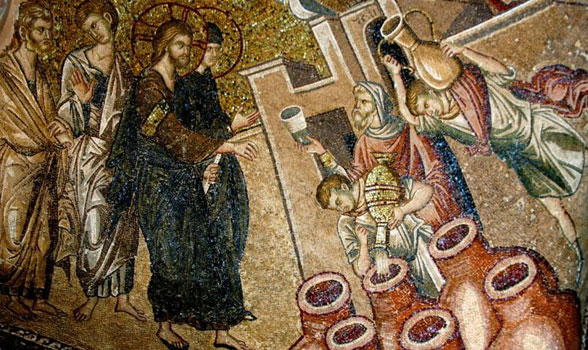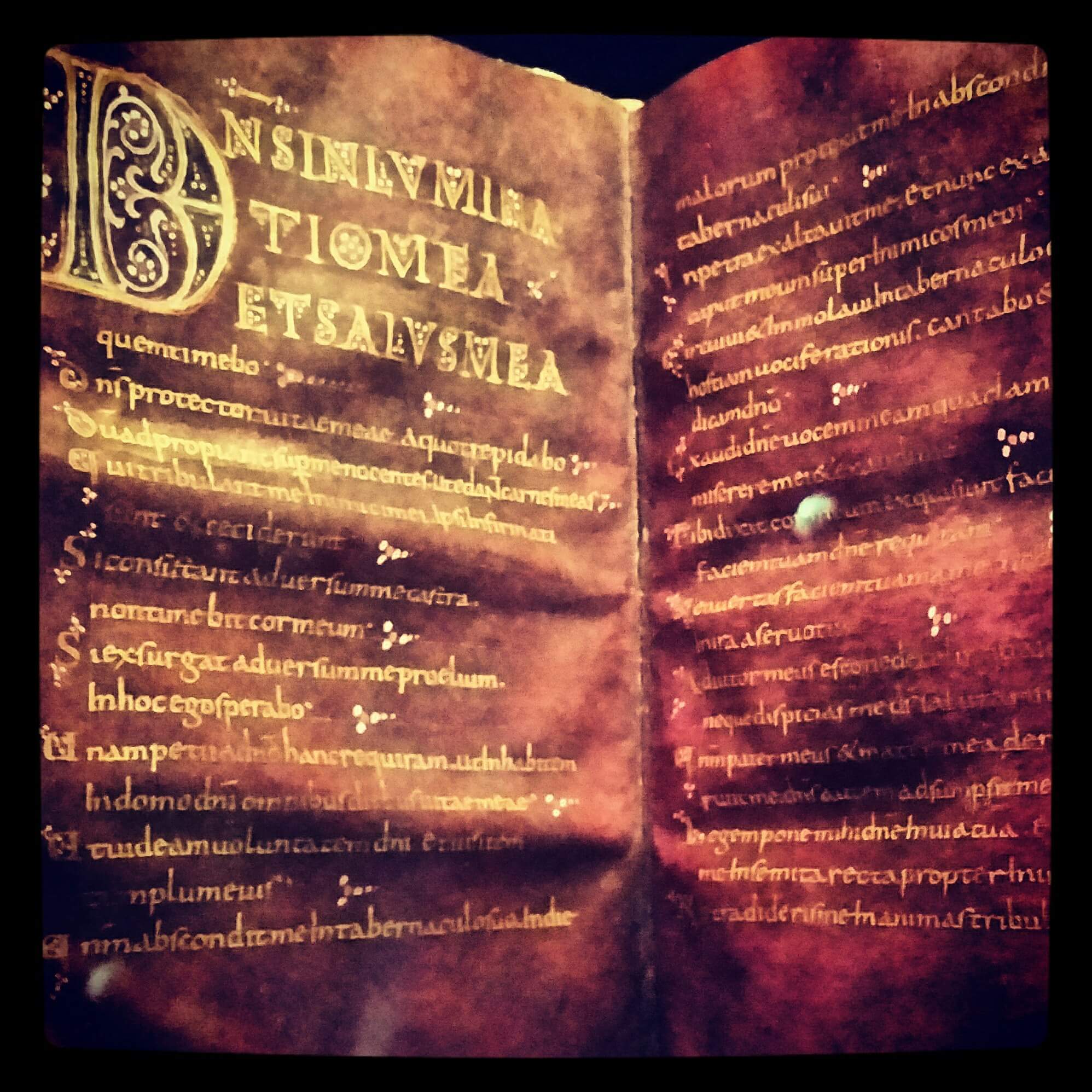This article is the first of a series on Meals with Jesus which formed part of this year’s Lent course. This first is on the pericope of the Wedding at Cana, John 2·1–11.

Let us begin at the end!
“On the third day there was a wedding in Cana of Galilee.”
That could mean Tuesday, but it doesn’t. It means Sunday: Easter Sunday, the third day when our Lord was risen! And so we begin at the end, for the end is the beginning, a new beginning. But shouldn’t the wedding be the happy-ever-after at the end? Whose wedding is it? Even that’s the wrong way round: invitations are usually sent before the wedding feast, not after it. We’re told the name of the groom in chapter three, and, as for the bride, try the next chapter.
This wedding at Cana seems all wrong; it’s one big question mark. It’s odd how we hear of a miracle of transmutating liquids and find that easier to cope with and understand than the grand narrative that this unsettling gospel is unfolding for us.
Anyway the wedding is a disaster. Is poverty the root cause of the lack of provision, or is it the overindulgence of the guests? Such a disaster is certainly an inauspicious start to married life. Disaster is averted by our subtle hero; there is no fanfare, and no one knows how everything just happened to work out. Except mum, she knew, and the waiters — everyone forgets the waiters — they knew. As we’re in on it too, are we the waiters who follow Jesus’ direction?
“Woman!”
I’m not sure Jesus’ mum enjoyed being addressed like that. It seems quite reasonable when used to address the woman at the well. Somehow it seems sweeter and more compassionate when the same word is spoken to his mother at the Cross, or used to another Mary on Easter Day.
“This at last is bone of my bones and flesh of my flesh; this one shall be called Woman, for out of Man this one was taken.”
Of the one Woman is born the incarnate Saviour, of the other is borne the risen Saviour.
“Now standing there were six stone water-jars.”
But the day of the Lord is the seventh! Where’s the seventh? Someone has left it in chapter four, by a woman counting prior engagements (five or six of them).
The water-jars were big, the wine was alcoholic and the steward thought it of very fine quality. We surely have a generous provider — no killjoy — who assures us that the best is ever yet to come.
This then is the wrong wedding perhaps, making us look for the right one.
“Jesus did this, the first of his signs, in Cana of Galilee, and revealed his glory; and his disciples believed in him.”
So it’s a sign, but where is it pointing? Why do the disciples believe, and what are they believing in (surely at least one of them doesn’t get it)?
Notes
The narrative of the wedding at Cana is something that most Christians know. It is one of those stories that is so well worn that we do not see what is happening.
It is suggested that the exploration of this story be one of questioning, questing and sleuthing, a something for fans of riddles, cryptic crosswords and whodunnits. John’s Gospel is introducing us to the marriage metaphor of the Kingdom of Heaven, in which Jesus is the Bridegroom.
The modern reader wants to be assured that something really happened. That Jesus, his mother and disciples went to a wedding is unremarkable. However, John’s Gospel tells us about this wedding not that we should marvel at Jesus’ provision of wine, but that we should ask about what it means. That is why it is called a ‘sign’: it points us to something else. Jesus, in his sign, and John’s Gospel are showing us something beyond the superficial facts of the event.
Thus, when we ask whose wedding it is, and the following chapters strongly suggest that Jesus is the bridegroom and the Samaritan woman at the well is the bride, we are not taking this as the literal interpretation, but something deeper. This sign is telling us about how a believer comes to Jesus in faith and is transformed by their relationship with him. Perhaps it is best to think of this as a real event, whose details are of little relevance to the gospel, but with a metaphorical or spiritual meaning that is crucially important to John’s Gospel.
I’m not sure if Billy Graham popularised the phrase ‘personal Saviour’, but he uses it often. It can be problematic if it introduces too much of a sense of individualism to faith, eclipsing its cosmic and corporate nature. However, the phrase ‘personal Saviour’ perhaps captures something of what the sign at Cana is about: Jesus who comes and finds us as a bridegroom calls for his bride (the Middle Eastern tradition is that the groom goes on procession to the bride’s house to call her to come out to the wedding feast). It might be good to think about faith as not so much an intellectual thing or the signing up to a credal list but as a heartfelt response to the love of our Saviour. Of course, Jesus’ salvation goes beyond the personal level (“…for the purification of Israel”). The Kingdom of God is like the greatest romance that brings a new beginning in life and a generous overflowing of good things.
